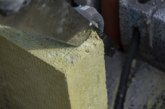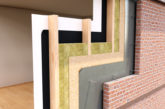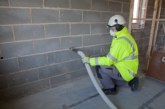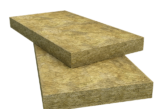
Alun Price, Product Manager from Isover, explores how incorporating acoustic insulation at the specification stage can create a peaceful environment for homeowners.
In the UK, we typically spend around 90% of our time indoors, with much of it being spent in our homes. As such, people are now becoming more interested and concerned with their wellbeing and how the internal environment affects them. In fact, a survey commissioned by Saint-Gobain UK, revealed that 90% of respondents, buying or moving into a new home, were concerned about the impact their homes would have on their health and wellbeing.
With this in mind, it is important for housebuilders to up their specification game in order to create a healthy environment. Indeed, how a home sounds is every bit as important as how it looks!
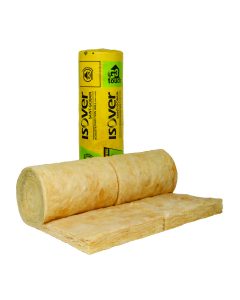
Acoustic benefits
Incorporating high quality acoustic insulation solutions at the specification stage will provide both the future homeowners and the housebuilder with benefits. For homeowners, it will improve their general wellbeing, allow everyone to enjoy their home to the full and provide better sound control for today’s hectic lifestyles. For housebuilders, they will be able to differentiate themselves in the market as the homes will be built to a superior quality and customer satisfaction will be greatly improved.
In England and Wales, acoustic performance is covered by Approved Document E of the Building Regulations, which stipulates the minimum standards for sound reduction and absorption qualities in homes and schools. For example, the minimum requirement for separating walls between new dwellings is to reduce airborne sound by 45dB.
Specifying glass mineral wool can significantly improve the acoustics of a building and can help housebuilders surpass Building Regulations if specified correctly – all the while contributing to the thermal performance of the property. Glass mineral wool offers a range of benefits: it is lightweight, easy to install, non-combustible, sustainable, provides effective thermal performance and most importantly it absorbs sound and drastically reduces the transfer of noise.
There are many glass mineral wool solutions available on the market which have been designed for the different applications within a home. For example, for masonry separating walls it is recommended that a glass mineral wool roll, such as Isover’s RD Party Wall Roll, is specified. Products such as this are compliant with many of the generic Robust Detail specifications and furthermore, Isover’s most current proprietary Robust Detail specifications offer sound reduction of at least 5dB better than those required by Approved Document E, whilst providing the best possible level of thermal performance (i.e. a U-value of 0) within Approved Document L of the Building Regulations (The conservation of fuel and power).

Internal walls
When it comes to internal walls, the most effective way to combat the transfer of noise is to build a lightweight partition (either timber or metal stud), consisting of two sheets of plasterboard with a layer of acoustic insulation, such as Isover APR 1200, sandwiched in between.
Although the Building Regulations state that a requirement of 40dB is mandatory, by using a mass-spring-mass partition construction it is easy for housebuilders and developers to increase this to 45 or even 50dB (where loud speech cannot be heard between rooms).
Internal floors
For internal floors, an acoustic glass mineral wool insulation, such as Isover APR 1200, is also recommended to enhance sound absorption within the floor/ceiling void, in order to achieve the minimum airborne sound insulation performance (40dB) required by Approved Document E. Currently, there is no regulation for impact sound for internal floors, but for enhancing the acoustic comfort within homes, housebuilders are encouraged to consider ways to maximise both the airborne and impact noise performance of internal floors as well.

